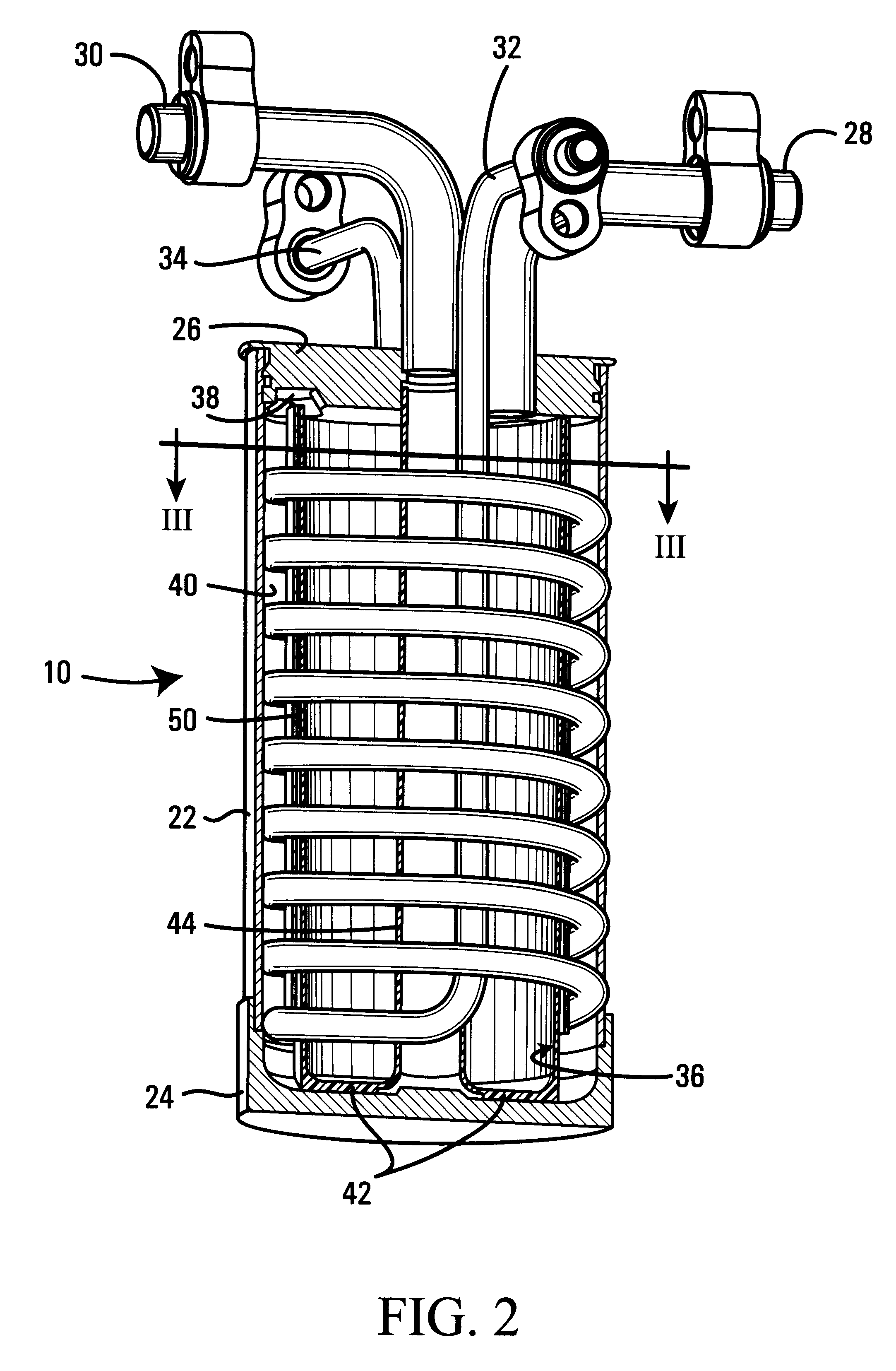Internal heat exchanger accumulator
- Summary
- Abstract
- Description
- Claims
- Application Information
AI Technical Summary
Benefits of technology
Problems solved by technology
Method used
Image
Examples
Embodiment Construction
The circuit diagram of FIG. 1 shows a schematic closed circuit air-conditioning system which may be used as a cooling unit or as a heat pump. Refrigerant fluid is stored in liquid form in an accumulator 10 to be drawn therefrom in gaseous form to the inlet of a compressor 12. The compressor delivers hot high-pressure refrigerant gas to a condenser 14 where the gas is cooled and typically partially converted to a liquid form. Refrigerant fluid from the condenser (still under high pressure) is expanded to a lower pressure through an expander valve 16, thereby undergoing a rapid drop in temperature, the low pressure cold fluid being heated in an evaporator 18 from where it is returned to the accumulator 10 in a mixed flow of liquid and gas. Depending upon the loading of the system more or less of the refrigerant fluid is condensed and evaporated, refrigerant that is in excess of the instantaneous requirements of the system being stored in liquid form in the accumulator 10. As thus far ...
PUM
| Property | Measurement | Unit |
|---|---|---|
| Length | aaaaa | aaaaa |
| Pressure | aaaaa | aaaaa |
| Flow rate | aaaaa | aaaaa |
Abstract
Description
Claims
Application Information
 Login to View More
Login to View More - R&D
- Intellectual Property
- Life Sciences
- Materials
- Tech Scout
- Unparalleled Data Quality
- Higher Quality Content
- 60% Fewer Hallucinations
Browse by: Latest US Patents, China's latest patents, Technical Efficacy Thesaurus, Application Domain, Technology Topic, Popular Technical Reports.
© 2025 PatSnap. All rights reserved.Legal|Privacy policy|Modern Slavery Act Transparency Statement|Sitemap|About US| Contact US: help@patsnap.com



